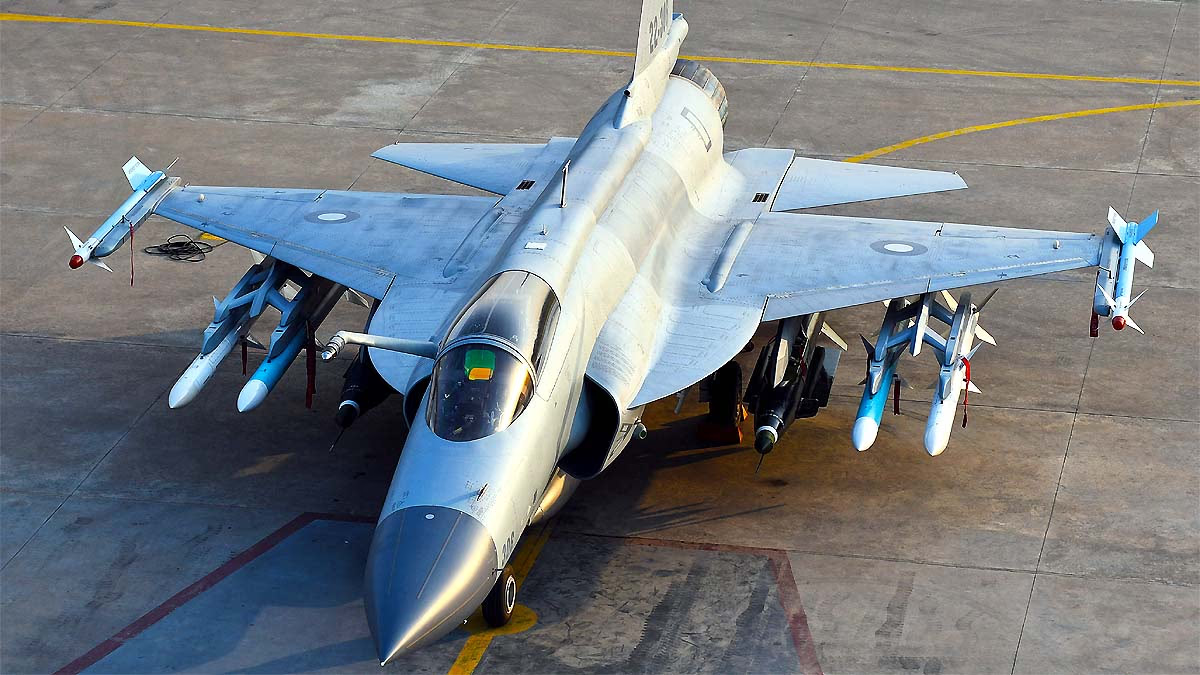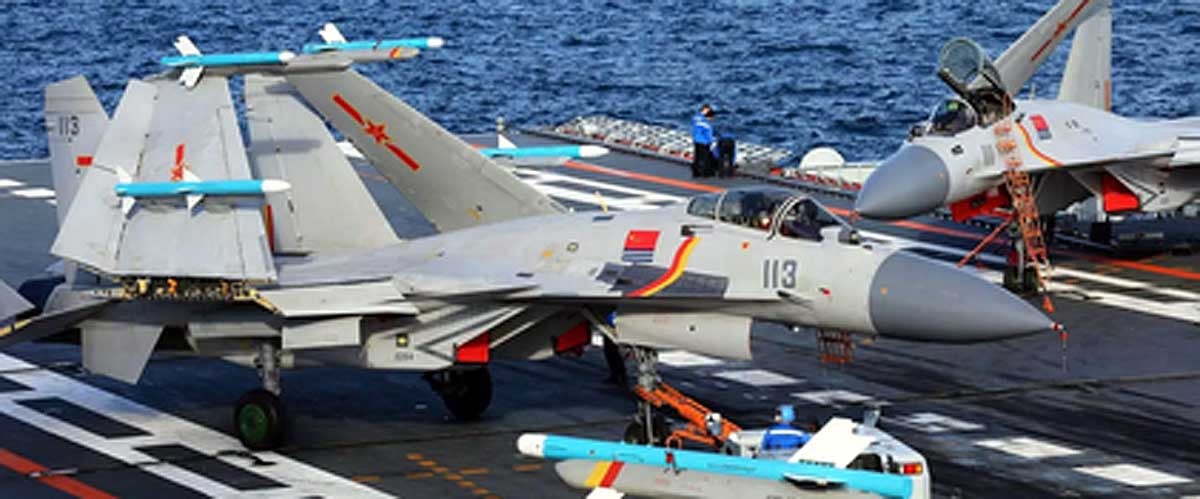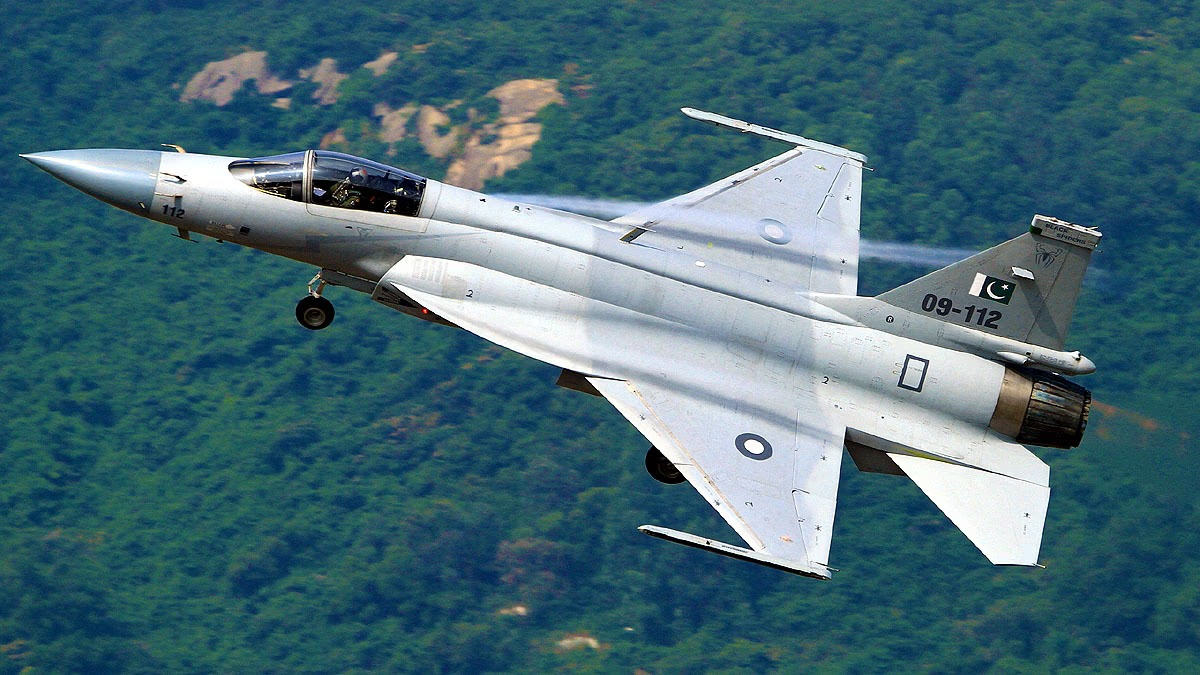The recent Tejas crash in Dubai has sparked discussions on social media. However, the spotlight often misses the advanced fighter jets of our neighboring countries, Pakistan and China, known worldwide yet often facing safety concerns.
Jets like Pakistan's JF-17 (co-developed with China), F-16, and Mirage, alongside China's J-10, J-11, and J-15, have endured several crashes. We'll explore the scientific and technical aspects leading to these mishaps, such as engine failures, bird strikes, or mid-air collisions.

Source: aajtak
Conversely, India's own Tejas (LCA) has only seen two accidents, both during its early development stages. One incident even concluded with the pilot's safe escape. This demonstrates Tejas as a strong program, learning from setbacks to improve continually. If numerous mishaps haven't hampered the progress of Pak-China jets, why should one setback hinder Tejas?
The Pakistani Air Force operates both old and new jets. JF-17 garners the most attention, yet F-16 and Mirage have also frequently fallen. Over 20 incidents since 2000 have resulted in more than 10 pilot fatalities. Key causes include maintenance neglect, outdated engines, and training errors.

Source: aajtak
2011 (First Incident): Crashed during test flight. Cause: Engine failure (Russian RD-93 engine pressure loss). Pilot safe.
2013: Went down during training mission. Cause: Hydraulic system failure (technical issue). Pilot survived.
2015: Crashed on operational flight. Cause: Bird strike shutting down the engine. No casualties.
2017: Crashed in testing. Cause: Software bug (fly-by-wire system error). Pilot ejected.
2024 (June, Zhang district): Block-2 variant crash. Cause: Russian engine failure (overheating and mechanical breakdown). Pilot safe, but Pakistan attempted to cover it up.

Source: aajtak
1987 (Rawalpindi): Crash during parade rehearsal. Cause: Bird hit. Pilot died.
3 incidents in the 2000s during training. Cause: Engine failures and mid-air collisions.
2019 (Post-Balakot): India claims shooting down an F-16 during a dogfight (Pakistan denies). Cause: Missile hit.
2020 (Islamabad): Crash during parade rehearsal. Cause: Technical failure (loss of flight control). Wing Commander Nauman Akram died.
2025 (May, Operation Sindoor): India claims an F-16 shootdown. Cause: BVR missile (unconfirmed, mentioned in reports).
Others: Additional 2-3 crashes from maintenance lapses.
2012 (Zhang): Night training crash. Cause: Engine failure. Pilot died.
2024 (May): Crashed. Cause: Structural crack (old machinery). Pilot safe.
2025 (Rahim Yar Khan): Two Mirages downed in an Indian attack. Cause: Missile strike.
Others: 7+ crashes from 2000-2020, mainly mechanical failures and training errors.
Scientific Analysis:
JF-17's Russian engine falters in heat, as Pakistan's desert regions test its limits. F-16s and Mirages are aged, causing material fatigue and cracks to form. Limited maintenance budgets delay parts replacement.
China's People’s Liberation Army Air Force (PLAAF) jets appear modern but often encounter issues with indigenous engines (WS-10). Since 2000, there have been 15+ accidents with 5-6 pilot fatalities. Causes include unreliable engines and risky training maneuvers.

Source: aajtak
2016 (November): Aerobatic team collision. Cause: Mid-air collision. One crash.
2020 (October): Crashed. Cause: Bird strike shutting the engine down. Pilot safe.
2021-22: Crashed near a village. Cause: Engine power loss (WS-10A engine failure).
2025 (Myanmar FTC-2000G, J-10 variant): Crash. Cause: Mechanical failure.
J-11 Flanker (based on Su-27 from the 1990s): 3+ crashes total.
2017 (December): Crashed during training. Cause: WS-10 engine failure. Captain Huang Peng died.
2016-18: 2 crashes. Cause: Engine mechanical breakdown (material defects).
Hainan Incident (2001): J-8II (similar to J-11) collided with a US plane. Cause: Aggressive maneuver. Pilot Wang Wei died.

Source: aajtak
2016 (April, 2 incidents): Training crash. Cause: Unstable flight control system. One pilot, Zhang Chao, died. Grounded for 3 months.
2025 (March, Hainan): Training crash. Cause: WS-10 engine power loss. Pilot safe.
2018: 2 crashes (land and sea). Cause: Technical issues in carrier landing.
Others (J-7/F-7, J-8): 5+ accidents, like 2022 (Zhungyang) J-7 crash – hit a residential area, 1 fatality. Cause: Loss of control during training mission.
Scientific Insight:
China's WS-10 engines suffer from a lack of quality control – weak materials and inadequate testing. High-speed stratospheric flight causes heat build-up leading to engine failure. Reverse-engineering Russian designs bring original problems.
India's HAL Tejas has been operational since 2001. With over 1200 test flights, only 2 crashes have occurred – an impressive record.
2024 (March, Jaisalmer): Trainer variant crash. Cause: Oil pump malfunction (in its single engine). Pilot safely ejected.
2025 (November, Dubai Airshow): Demo crash. Cause: Loss of control in low-level maneuver (investigation ongoing). Wing Commander Naman Syal was martyred.
Scientific Perspective:
Tejas, powered by a reliable GE F404 engine, carries risks due to being single-engine. HAL learned from the first crash, increasing audits and monitoring. The Mk1A variant is enhanced with AESA radar and EW systems.
Comparison: Pak-China jets have 30+ crashes (70% engine issues) yet continue development. Despite 5 JF-17 crashes, over 150 are produced. F-16 has over 100 global crashes but flies 4,600+ units globally.
Tejas' Strength: Indigenous program – 180 Mk1A orders, Mk2 in the pipeline. Crashes lead to improvements: Engine health checks increased. IAF has not grounded the fleet, flights continue.
Scientific Lessons: Every crash is 'isolated.' Tejas benefits from fly-by-wire and BVR missiles, ensuring high safety. Exports (Malaysia, Argentina) may face hurdles, but domestic orders are secure.
The crashes among Pak-China jets indicate that technological flaws need addressing. Tejas' single mishap, although unfortunate, will fortify the program.




